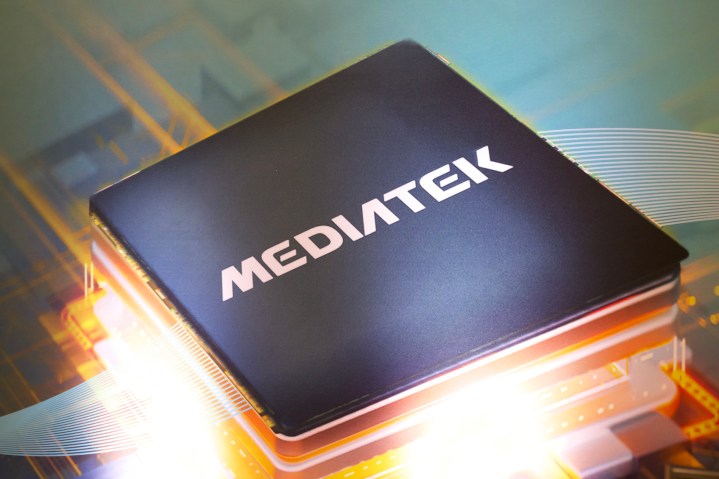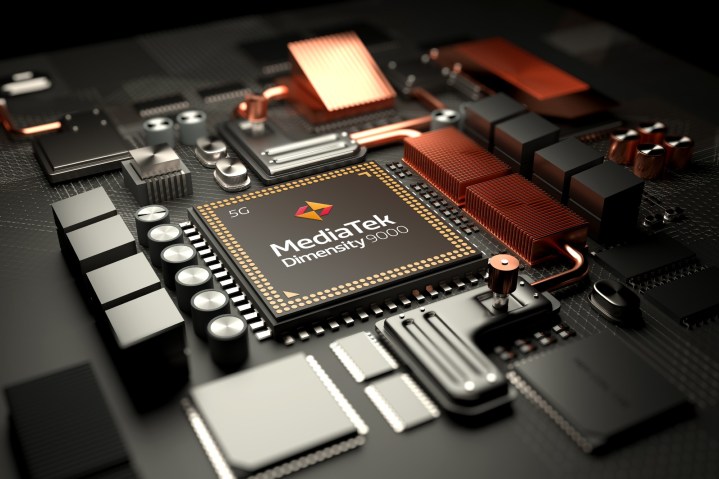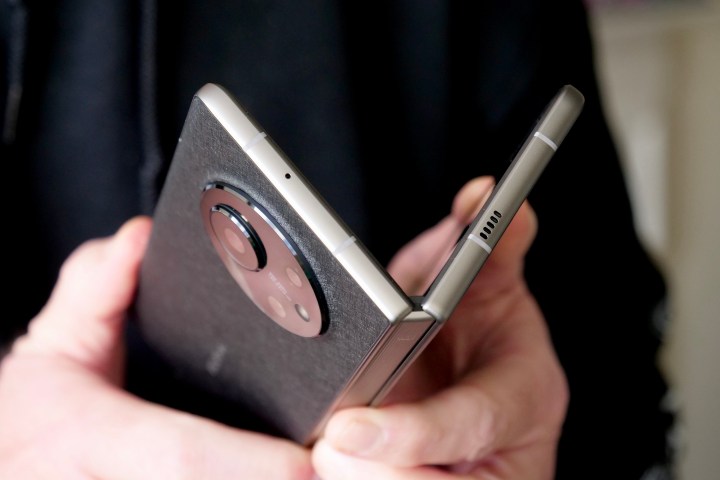
For its next major smartphone chip release, MediaTek is planning something big, and it says it will be “a radical departure from conventional thinking” when it comes to processor architecture design.
This is according to MediaTek’s Finbarr Moynihan, the company’s vice president of corporate and global marketing, who revealed details about the upcoming new chip during a recent conversation with Digital Trends.
Introducing MediaTek

Before going into detail about the new chip, here’s a quick refresher on MediaTek for those who may not know the company well. The Taiwanese semiconductor company is the fourth largest of its type in the world, and Moynihan provided a few figures on the company’s increasing — and impressive — penetration across the technology industry:
“We think we will have over 50% market share for Android in the European market this year, so more than half of the Android phones there will be powered by MediaTek. In the U.S. market, we probably are a little lower, probably around 45% of the market for Android by volume.”
MediaTek powers a lot of midrange devices in the U.S. and U.K., including the OnePlus Nord N300 and Motorola Edge (2022). But it’s still eyeing the flagship market with its Dimensity 9000-series chips, and it’s seeing considerable success in this space in China.
“By our calculations, we’re probably somewhere between 20% and 30% of the market in China for flagship phones if you just talk about the Android market,” Moynihan said. “Given that figure was zero two years ago, we feel pretty good about it.”
Amazon is MediaTek’s biggest customer in the U.S., with everything from its Fire smart televisions to the Amazon Fire Max 11 tablet being powered by the company’s chips. MediaTek is making inroads into automotive too, having struck a partnership with Nvidia recently.
What’s coming next?

Rumors have been spreading about the next major MediaTek chip release, currently said to be called the Dimensity 9300. It will reportedly use an all-big core design, moving away from the big core/small core architecture we’re used to seeing. It means the chip may do away with “efficiency” cores used for smaller, basic tasks and simply use a combination of big and “performance” cores to handle everything. Moynihan’s comments certainly suggest this is the direction the company will take.
“The CPU architecture [of the next chip] is very different. We’re leaning heavily into the big cores of the X series and the A7-series that ARM offers and not the little cores,” he told Digital Trends. “It’s going to have a pretty big step up in computing capability, both single-core and multi-core, which will bring advantages to a lot of different use cases. It’s going to be an interesting architecture from a computing perspective.”
Chipmakers like Qualcomm and Apple have traditionally used a multi-core design with a mixture of big and small cores, where basic tasks are handed off to the less power-intensive cores, leaving the larger cores to handle tougher tasks like gaming and multitasking. So, what’s the advantage of using all big cores?
I think it’ll it will bring advantages for a lot of different use cases.
“[It will benefit] application responsiveness and multiple applications running at the same time, it will have advantages for gaming, and advantages in the camera and video use cases,” Moynihan said. “The computing benefits will be useful for generative AI applications, [a space] which is moving fast, and we’re not going to have everything optimized using Accelerated Processor Unit (APU) hardware to accelerate it. I think it’ll it will bring advantages for a lot of different use cases.”
But how will this new architecture work with the tasks currently handled by smaller efficiency cores? Moynihan provided a small insight into MediaTek’s thinking:
“A lot of [the functionality] will be ‘wake up, do something very quickly, and then shut down,’ all performed using clever power management techniques. Instead of using a medium-sized core for a task, if you can use a big core for a fraction of that time and then shut it down and get the same job done, it actually can turn out to be more power efficient overall,” he explained.
The evolution of Android and foldables

As it crafts the new processor, MediaTek is also looking at how Android is evolving, as well as the new wave of hardware that will be running it.
“We also studied very carefully where Android is going. It’s getting bigger and more complicated, and at some points, its [requirements are] almost beyond the scope of a single, small ARM core,” Moynihan said. “So if [a chip] can’t get a job done on one core, then it’s opening up multiple cores, and then you’re already at a different power profile than maybe you were.”
The new design approaches performance and efficiency in a different way, but with the same end result in mind. Although the new chip’s ability will benefit mobile devices of all types, Moynihan indicated it’s also going to be well-suited to foldables, a trend he sees continuing in the industry:
“We’ve had some success in flips and foldables already, and I think that trend is going to continue,” he said. “The big screens and ability to run multiple applications draw heavily on the CPU in the architecture, maybe more than even a traditional bar phone. Our architecture will bring advantages there. We genuinely believe it will give a better user experience for a whole bunch of use cases. We’re pretty excited about it.”
It’s all very exciting, but there are some rumors indicating it’s not all smooth sailing for MediaTek and the unusual new chip. One recent report suggests MediaTek is having to work hard on thermal management for the processor, as the combination of powerful cores is making it run at a higher-than-optimal temperature. Solving this will be key to maximizing performance.
High-tech, high temperatures

MediaTek’s self-described “radical” chip architecture is only the start of what it has planned for the near future. Along with chip manufacturer TSMC, MediaTek has announced it will use a 3-nanometer process to make a processor, but this won’t be for its 2023 chip. However, its recent announcements regarding generative AI support will play a part, and they will bring unique benefits all of their own.
If MediaTek sticks with tradition, we’re likely to see the new processor announced at the brand’s annual technology summit, which is likely to take place around October or November. By that time, we will have also seen what Apple can do with the A17 Bionic chip in the iPhone 15, and likely Qualcomm’s next-generation Snapdragon chip too.
Should the Dimensity 9300 turn out to be truly different from the competition and as transformative as Moynihan is suggesting, then MediaTek’s approach promises to make the flagship processor market very interesting later this year.
Editors' Recommendations
- Motorola’s new Android phone looks amazing, but there’s a catch
- An unknown company just set a new standard for smartphone cameras
- The best iPhone and Android apps for Black History Month 2024
- I used a new type of smartphone that could replace Android
- Look who just replaced Samsung as king of the global smartphone market




